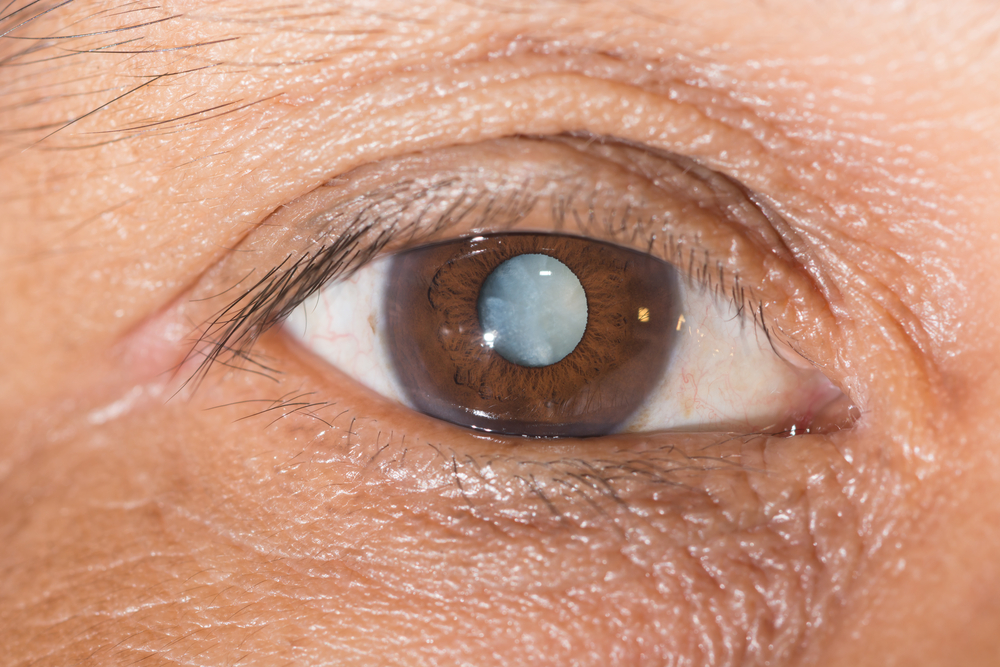Cataracts are a condition in which older adults may experience cloudy or blurry vision. Cataracts begin to occur more commonly once an older adult reaches or passes the age of 60. Cataracts are a widespread condition that is treated with the help of your doctor.
Cataracts develop when the eye begins to build up the protein in the eye’s lens, leading to clouding a person’s vision. This restricts light from effortlessly passing through clearly, which leads to dark vision and possible vision loss.
There are also multiple types of cataracts.

Age-Related
Age-related cataracts are one of the most common forms of cataracts and occur as the eye fogs up with age and as the functions of the eye deteriorate over time.
Congenital
When babies are born with cataracts, it is known as congenital glaucoma. Their cataracts arise from complications in the womb, infection, injuries, or abnormal development in their childhood.
Secondary
These cataracts usually result from other medical conditions, such as diabetes. Cataracts can also be spawned from living in or breathing in toxic substances. Cataracts can form from breathing in materials such as ultraviolet light or radiation or from ingesting medicine such as corticosteroids or diuretics.
Traumatic
These kinds of cataracts occur after any trauma or damage is done to the eye.
Other possible ways of obtaining cataracts are extensive UV light exposure, heavy drinking, and smoking.
Cataract Symptoms
Cataracts can seriously injure and blur your vision. They are similar to other optic conditions, such as glaucoma, in that they form very slowly and are frequently allowed to ultimately develop without any signs. Once cataracts have established to the point where they start to block light, some symptoms may begin to reveal themselves, such as:
- Vision becomes cloudy, fuzzy, blurry, foggy, or filmy.
- Nearsightedness or Myopia (Occurs more in older adults)
- Changes in the way that you perceive color or subtle color blindness.
- Problems driving at night (An example of this would be a strange glare, or a halo effect, from headlights.
- More than usual glare and overall glare problems in the day
- Double vision in the eye that is affected
- Possible trouble with eyeglasses and contact lenses not working well or not working at all.
How are they diagnosed?
A diagnosis of cataracts is most likely to be revealed from the results of an eye exam that your optometrist or eye doctor should regularly do with you. They will first complete a review to see how well you can typically see and test with special eye drops that dilate your pupils. This is to check the lens and other parts of the eye. Remember to bring the eyeglasses or contacts that you wear to your appointment.
What is the treatment for cataracts?
Suppose the state of your vision has deteriorated so much that neither glasses nor contacts can take care of it. In that case, your doctor can prescribe medication to save your eyesight or prevent further damage. If even the medicine is not powerful enough to stop cataracts, then cataracts may need to be operated on to fix any cataract-related problem in the eye. Cataract surgery is an outpatient surgery. This means patients can go home the same day if the eye surgery operation is completed. Not to worry, though, as the surgery almost always goes well, with 95% of patients saying that their vision felt better after. The operation entails the surgeon removing the eye’s lens and replacing it with an artificial, human-made one. Complications can arise if the patient has any other eye conditions causing problems.
Medications like eye drops may be prescribed. Patients should also wear sunglasses as they will have strong sensitivity to sunlight in the week or weeks after.
Can they be prevented?
Doctors are still puzzled about the exact cause of cataracts and other similar conditions, such as glaucoma, and still aren’t sure how to prevent these severe ailments. Some valuable advice is to regularly have eye exams as they are the best way to spot cataracts before they enter their advanced stages. These conditions usually happen to older people, especially those over 60, so it is essential to ensure your eyes are completely healthy as an older adult. Although doctors don’t know how to prevent these conditions, they do know that they happen more often to people with a family history of eye problems.